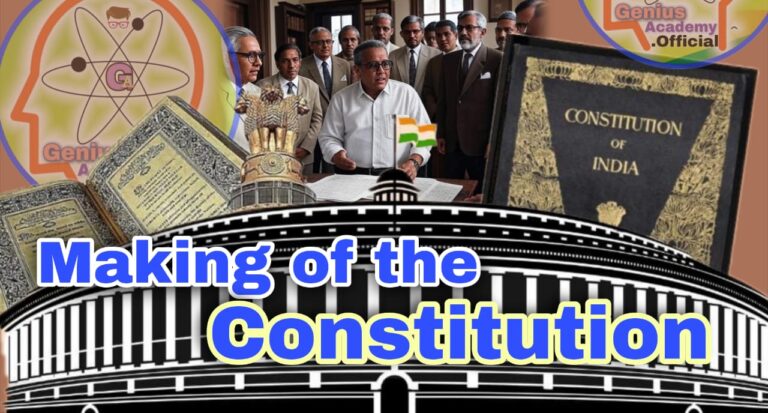India’s Signing of the Riyadh Design Law Treaty (DLT): Strengthening the Intellectual Property Ecosystem
India’s decision to sign the Riyadh Design Law Treaty (DLT) underscores its commitment to enhancing its intellectual property rights (IPR) regime. The treaty, facilitated by the World Intellectual Property Organization (WIPO), represents a critical step in harmonizing the global framework for protecting industrial designs, fostering innovation, and ensuring inclusive growth.
Understanding the Riyadh Design Law Treaty
Background
- Adopted after nearly two decades of negotiation under the WIPO framework, the DLT aims to simplify the procedural frameworks for protecting industrial designs across jurisdictions.
- The treaty seeks to enhance global cooperation in the field of industrial design by introducing modernized and efficient mechanisms for registration and protection.
Objectives
- To harmonize design registration procedures across multiple jurisdictions.
- To provide an accessible framework for diverse stakeholders, including SMEs, startups, and independent designers.
- To foster innovation and promote the creative economy.
Significance for India
- The treaty aligns with India’s objective of boosting its intellectual property ecosystem.
- By joining the treaty, India aims to increase competitiveness in global markets and protect its design innovators.
Key Provisions of the Riyadh DLT
The treaty introduces several forward-looking provisions to streamline design protection:
1. Relaxed Time Limits
- The treaty provides for extended timelines to reinstate lapsed rights, offering flexibility for applicants who might face procedural delays.
2. Priority Claims
- Applicants can correct or add priority claims post-submission, enhancing accuracy and fairness in the registration process.
3. Simplified Licensing and Assignments
- The treaty simplifies the procedures for recording assignments and licenses, reducing administrative hurdles for stakeholders.
4. Multi-Design Applications
- Applicants can file multiple designs in a single application, cutting costs and streamlining administrative requirements.
5. Electronic Systems
- Contracting parties are encouraged to implement electronic systems for industrial design processes, enabling efficient filing and management.
India’s Initiatives in Strengthening IPR
India’s IP framework has evolved significantly to align with global standards, and signing the Riyadh DLT is a continuation of its efforts to foster innovation. Below are some key initiatives:
1. National IPR Policy (2016)
- The National IPR Policy provides a unified vision for intellectual property management.
- It integrates all IPRs under a single framework and promotes:
- Innovation and creativity
- A strong legal framework
- Effective enforcement mechanisms.
2. Cell for IPR Promotion and Management (CIPAM)
- CIPAM was established to:
- Coordinate the implementation of the National IPR Policy.
- Promote awareness about intellectual property among the public and businesses.
- Offer support to startups and SMEs in navigating IP-related challenges.
3. National Intellectual Property Awareness Mission (NIPAM)
- A flagship initiative under CIPAM, NIPAM focuses on:
- Educating students and professionals about IPR.
- Conducting awareness programs in schools, colleges, and universities.
- Promoting a culture of innovation across all sectors.
4. Startups Intellectual Property Protection Scheme (SIPP)
- The SIPP scheme aims to create a conducive ecosystem for startups by:
- Providing financial and procedural support for filing and managing IP assets.
- Offering subsidized fees and fast-tracked registration processes.
What is Intellectual Property (IP)?
Definition
Intellectual property (IP) encompasses creations of the mind, including:
- Inventions.
- Literary and artistic works.
- Designs.
- Symbols, names, and images used in commerce.
Importance
IP laws ensure that:
- Innovators are rewarded for their contributions.
- Economic benefits accrue to inventors, artists, and businesses.
- The balance between public interest and innovation is maintained.
Types of Intellectual Property
1. Patents
- Exclusive rights granted for inventions that provide a novel solution to a problem.
- Encourage technological advancements and industrial development.
2. Copyright
- Protects creators’ rights over literary, artistic, and musical works.
- Helps authors, filmmakers, and musicians monetize their creativity.
3. Trademarks
- Distinguishing symbols, names, or logos associated with businesses or products.
- Ensure brand identity and protect against counterfeiting.
4. Industrial Designs
- Protect the ornamental and aesthetic aspects of a product.
- Critical for industries like fashion, automobile, and electronics.
5. Geographical Indications (GIs)
- Signify the origin and quality of goods associated with specific regions.
- Promote regional heritage, e.g., Darjeeling tea, Mysore silk.
6. Trade Secrets
- Protect confidential business information like formulas, processes, or strategies.
- Essential for maintaining competitive advantages.
India’s Growing Role in Global IP Ecosystems
1. Strengthening Global Collaborations
- India has engaged with international treaties like the Paris Convention, Berne Convention, and the TRIPS Agreement.
- Signing the Riyadh DLT positions India as a significant player in the global design innovation space.
2. Facilitating Startups and SMEs
- With schemes like SIPP and ease-of-doing-business reforms, India supports the growth of small enterprises.
- The simplified procedures under DLT complement these efforts.
3. Encouraging Creativity and Innovation
- India has seen a rise in patent and trademark applications, reflecting growing awareness about the importance of IPR.
4. Focusing on Digital Transformation
- The integration of electronic filing systems for IPR is a key focus area.
- Encourages transparency, speed, and efficiency in registration processes.
Benefits of the Riyadh Design Law Treaty for India
1. Streamlined Processes
- Indian innovators can now access harmonized procedural frameworks across multiple jurisdictions.
2. Cost Efficiency
- Filing multi-design applications in one go reduces administrative and legal costs for Indian businesses.
3. Greater Protection for Indian Designs
- The treaty ensures that Indian designs are globally recognized and protected, reducing the risk of infringement.
4. Boost to the Startup Ecosystem
- Startups can benefit from the treaty’s provisions, especially through initiatives like SIPP and Startup India.
5. Enhancing India’s Global Competitiveness
- Strengthened IP frameworks increase India’s attractiveness for investors and support export-oriented industries.
Challenges and the Way Forward
Challenges
1. Awareness Gaps:
- Despite government efforts, many small businesses and startups remain unaware of IP benefits.
2. Administrative Delays:
- Patent and design registrations in India often face backlogs, hindering innovation.
3. High Costs:
- Filing IP claims, especially in multiple jurisdictions, can be expensive despite recent reforms.
4. Counterfeit Issues:
- Counterfeit goods threaten both Indian and international brands.
5. Balancing Public Interest:
- Overprotection of IP can stifle knowledge-sharing and innovation.
Way Forward
1. Boost Public Awareness:
- Expand programs like NIPAM to cover more stakeholders, including rural innovators.
2. Streamline Administrative Systems:
- Leverage technology to reduce delays in processing IP claims.
3. Promote International Cooperation:
- Encourage cross-border collaborations in IPR enforcement and education.
4. Encourage Affordable IP Mechanisms:
- Subsidize costs for startups and individual innovators to file international patents and designs.
5. Strengthen Enforcement:
- Combat counterfeit goods through stricter IP enforcement mechanisms.
6. Encourage Academia-Industry Collaboration:
- Universities can act as incubators for IP innovation, bridging the gap between research and marketable designs.
Conclusion
India’s signing of the Riyadh Design Law Treaty marks a milestone in its journey toward fostering a robust intellectual property ecosystem. By integrating DLT provisions with existing initiatives like National IPR Policy, SIPP, and Startup India, the country is well-positioned to become a global innovation hub. However, addressing challenges like administrative delays, awareness gaps, and enforcement issues will be essential for maximizing the benefits of this progressive step.
With a balanced approach, India can create an IP regime that not only supports its economic aspirations but also fosters inclusive and sustainable growth. This will empower innovators, businesses, and creators, ensuring that their intellectual contributions receive the recognition and protection they deserve.
Source:- PIB
Daily Mains Practice Questions
UPSC (CSE) Mains Questions on Riyadh Design Law Treaty
General Studies Paper II (Governance, Constitution, Polity, Social Justice, and International Relations)
| [Q1.] Discuss the significance of India’s signing of the Riyadh Design Law Treaty in the context of strengthening the global intellectual property ecosystem. How can this step benefit startups and small enterprises in India? (250 words) |
| [Q2.] “A robust intellectual property regime is vital for fostering innovation and ensuring economic growth.” Critically analyze this statement in the context of India’s intellectual property initiatives, including the Riyadh DLT. (250 words) |
| [Q3.] Assess the challenges and opportunities associated with India’s intellectual property framework, especially in the context of its international commitments like the Riyadh DLT. (250 words) |
General Studies Paper III (Economic Development, Technology, Environment, Security)
| [Q4.] How does the Riyadh Design Law Treaty facilitate technological and procedural advancements in the field of industrial design? Discuss its relevance for India’s “Digital India” initiative. (250 words) |
| [Q5.] Examine the role of schemes such as Startups Intellectual Property Protection (SIPP) and India’s signing of the Riyadh DLT in nurturing innovation ecosystems and protecting the interests of small businesses. (250 words) |
| [Q6.] India’s participation in international treaties like the Riyadh DLT demonstrates its commitment to global collaboration in intellectual property protection. Discuss the implications of such commitments for India’s trade and innovation sectors. (250 words) |
Ethics, Integrity, and Aptitude (General Studies Paper IV)
| [Q7.] Evaluate the ethical implications of intellectual property laws in balancing public access to innovations with the rights of creators and inventors. Reference India’s approach under the National IPR Policy and the Riyadh DLT. (250 words) |
FAQs on the Riyadh Design Law Treaty and India’s IPR Ecosystem
1. What is the Riyadh Design Law Treaty?
Answer:—
The Riyadh DLT is an international treaty adopted under the World Intellectual Property Organization (WIPO). It aims to harmonize the procedural frameworks for protecting industrial designs globally and introduces measures to simplify design registration and enhance accessibility..
2. Why is the Riyadh DLT important for India?
Answer:—
- Signing the Riyadh DLT enables India to:
- Streamline its design registration processes.
- Protect the interests of Indian designers in international markets.
- Enhance its global competitiveness in industrial design innovation.
- Support SMEs and startups by reducing procedural and financial burdens.
3. How does the treaty benefit Indian businesses and innovators?
Answer:—
- It offers:
- Simplified procedures for design filings, including multi-design applications..
- Easier correction and addition of priority claims.
- Enhanced digitalization of registration systems.
- Cost and time efficiency for businesses registering designs across jurisdictions.
4. What are the main challenges in India’s intellectual property framework?
Answer:—
Key challenges include:
- Limited public awareness about IP rights.
- High costs associated with IP protection.
- Backlogs and delays in the patent and trademark registration process.
- Counterfeit goods and weak enforcement of IP laws.
5. What initiatives has India undertaken to strengthen its IPR ecosystem?
Answer:—
Major initiatives include:
- National IPR Policy (2016): A unified vision document promoting innovation and efficient IP administration.
- CIPAM: Coordinates IP awareness programs and implements the National IPR Policy.
- National Intellectual Property Awareness Mission (NIPAM): Provides training in educational institutes.
- SIPP Scheme: Supports startups in filing and managing their IP assets.
6. What types of intellectual property are protected under Indian law?
Answer:—
- Patents: Protect inventions with novel applications.
- Copyright: Safeguards creators of literary and artistic works.
- Trademarks: Distinguishes goods/services of one enterprise from others.
- Industrial Designs: Covers aesthetic and ornamental aspects of products.
- Geographical Indications: Highlights goods tied to specific regions.
- Trade Secrets: Protects confidential business information.
7. How does the Riyadh DLT align with India’s broader economic goals?
Answer:—
The treaty supports India’s:
- Export-oriented industries by ensuring global IP protection.
- Startups and SMEs through reduced procedural complexities.
- Vision of becoming a hub for innovation and design-driven industries.





